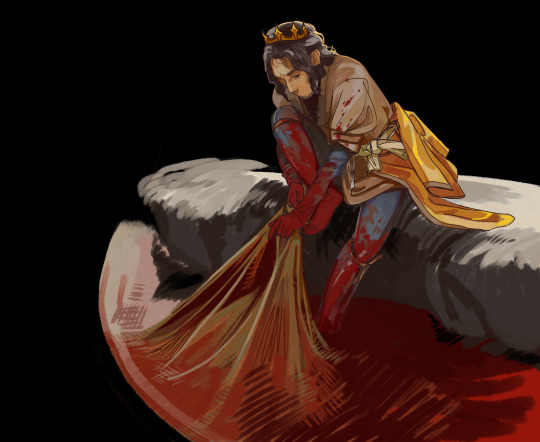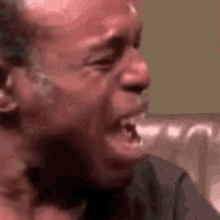#waste processing
Explore tagged Tumblr posts
Text
How to Set Up a Wastes Management Businesses
Beginning a waste management enterprise may be a profitable and critical career in today's world. Here's a breakdown of the important thing steps to get you commenced:

Define your area of interest:
Not all waste is created the same. Production websites produce more waste than households or hospitals. Studies diverse waste streams and discover a spot you could cater to. This can be primarily based on the sort of waste (e.g., risky substances, electronics), or the client base (e.g., residential, commercial).
Craft a marketing strategy:
This roadmap will manual your choices and cozy funding. Define your offerings, target market, competitive analysis, advertising and marketing approach, and economic projections.

Cozy allows and Licenses:
Policies vary with the aid of vicinity, so research the allows and licenses required to perform on your region. Touch your neighborhood environmental employer and enterprise registration office for specifics.
Financing Your enterprise: Startup expenses can include motors, systems, and advertising. Explore investment options like personal financial savings, small commercial enterprise loans, or offers in particular for green businesses.
Invest in the proper gadget:
The kind of system you will want depends on your preferred area of interest. For a simple series, you would possibly start with a truck and packing containers. Some niches might also require specialized automobiles or processing gadgets.
Gather Your Team:
Depending on the scale of your operations, you may need to lease drivers, waste handlers, and an administrative body of workers. Make sure your team gets the right education on protection guidelines and waste dealing with processes.
Construct Relationships:
Community with potential customers and set up partnerships with recycling facilities or landfills. Presenting splendid customer service and reliable waste disposal is key to retaining clients.
* Promote Your commercial enterprise: expand a marketing approach that reaches your target audience. This can include growing a website, social media presence, or direct outreach to potential customers.
Stay Compliant:
The waste control enterprise is heavily regulated. Staying up to date on environmental policies and adhering to the right disposal practices is vital to your commercial enterprise's achievement.
Include Sustainability:
Look for ways to decrease waste and maximize recycling in your operations. This will involve providing recycling offerings or partnering with centers that prioritize green practices.
By following these steps and engaging in thorough research, you may set up a thriving waste management commercial enterprise that fulfills a crucial need in your community.
#waste management#starting a business#sustainability#recycling#waste collection#environmental conservation#business planning#waste disposal#eco-friendly business#waste processing
0 notes
Text
understanding academic concepts got me blushing swinging my legs giggling
#dude I spent like 3h trying to understand one algorithm yesterday & wrote the messiest most confusing ever paragraph abt it to the thesis#only to have a WAIT A MINUTE-moment today and completely rewriting that in like 20minutes#dont wanna say yesterday was wasted bc I'm sure that was just the thinking process I had to go through to get it to my head#studyblr#uni studyblr#april 2024#2024
6K notes
·
View notes
Text

horrible truth bomb dropped on my head 20 min ago
#I DIDNT KNOW I DIDNT KNOWWWWW#when i say damn thats crazy its bc i DO think its crazy i think a lot of things are crazy. like how birds have cloacas#or the way ppl draw a five pointed star in different ways and everyone assumes their way of doing it is how everyone does it#my brother is not letting me live this down btw he literally shouted at me like HOW DID YOU LIVE THIS LONG AND NOT PICK UP ON THAT#IDK!!! IDK I THOUGHT SOMETIMES IT COULD BE USED TO EXPRESS GENUINE SHOCK??????#he says its my delivery that makes it sound insincere bc i say it in a monotonous voice which when i think abt it YEAH....#THAT DOES MAKE IT LOOK KINDA BAD IN HINDSIGHT.....#and then i told him i keep a list of phrases that tickle my brain so i can remember to use them in conversation and apparently#most ppl dont do that bc he was like ???? stop doing that??? just let the conversation flow naturally it sounds fake>????#idk man i feel like if i did that and blurted out 'i forgot people find stuff like underwear arousing for some reason' instead of#smth like 'i wonder what kind of ppl find this kind of stuff the bees knees' like i normally do. it would. not go so well.#ALSO THE FLOW CHARTS ARENT NORMAL? i make flow charts before i call the bank or smth so i know what to say#its not just to blend in its also so i dont waste ppls time going uhhhhh as i think of how i put smth into words#its called stalling for time and i dont care if i have to say smth like thats just how the cookie crumbles if it gives me#5 more seconds to process whatever the fuck someone said without letting them think im not paying attention#doodles#diary#sona#puppysona#comics
2K notes
·
View notes
Text

Made of carcinogens and love
#yes this is an evo for the nuclear waste guy from before#he was too fun i got obsessed#i have been trying to simplify my coloring process but#this seemed to necessitate some complexity#creature design#monsters#clusters#slime#character design#digital art#spiralshells art
493 notes
·
View notes
Text

King of Spider Miles
I was going for 'postcard that the Donquixote Family very generously sends to potential business partners in the shitty little town they chose to reside in, so the people will know what their ruler / local mafia boss pirate looks like'
Nah but, I fell for a fictional town that gets almost no screen time at all. I just love that Doflamingo picked a literal garbage dump as his base of operations, sticking his Family into this fortress-looking waste processing plant, allegedly taking in like 100 hopeful but ultimately useless kids as mobster pirate apprentices and then losing all of them because his weirdo brother beat them and threw them in the trash until they ran off crying. What an era.
The landscape of scrap heaps, smoke stacks, industrial brick buildings and the name all speak to my imagination. It's like, Machinarium and Peaky Blinders meets Law's Little Nightmares-esque experience of being a tiny kid in a big hat amongst HUGE monster men. Just very into the Spider Miles vibes and the potential of that place aesthetically.
I also want to know if Doflamingo could use the constant chimney smoke and smog to create sky paths. Just create spiderwebs in the sky all over town and take a little walk.
#I've been wanting to paint those feathers for a while#and went a bit overboard but had a good time#Doflamingo is way too fun to paint#I'll paint that smile eventually but he's not very excited to be king of waste processing#spider miles fan art! because sometimes you become a fan of a town#I live next to an industrial harbor by a misty northern sea and I want more of my bleak home environment represented my favorite fiction#donquixote doflamingo#one piece#bad ninken art
438 notes
·
View notes
Text

“But someday you'll find somebody and love him and love him and never let him go.”
#my art#haikyuu!!#kagehina#hinata shouyou#kageyama tobio#been a while ;_;#I'm in the process of moving atm#I hope once I've settled in completely and everything is done I will feel more motivated to draw again#I miss drawing#I hate this feeling like I'm wasting so much time that I could use to get better 😞#anyway 😍 I will not give up
4K notes
·
View notes
Note
consider the irony of MQF being concerned SY's going to develop a heart demon. especially if having a heart demon weakens you in some way, like it feeding off your qi so you're more likely to die and allow it to manifest into the real world. of course SY hears "heart demon" and is like ur calling me mentally ill? rude!! and ends the conversation before getting the best possible lead he could get on what the creature stalking him is without SQH's help
ANON THAT IS HILARIOUS
at first i thought you were going to say the irony was that mu qingfang was trying to prevent a heart demon from growing while one was already there, but it got even better.
this kind of obliviousness would be right up shen yuan's alley. poor mu qingfang is just being concerned, noticing that shen yuan hasn't been feeling very well, has been distracted and nervous and tired, seemingly on edge all the time. because of the dating sim aspect of the game, mu qingfang and shen yuan share ample moments together, and mu qingfang takes the chance to have a talk with shen yuan.
mu qingfang tries to explain the concept of "heart demons" to at least make him aware that this is a real issue. he explains that a heart demon is a significant disturbance in one's emotional regulation or behavior, manifestations of inner imbalance, causing mood swings, nightmares, disorientation, then hallucinations, voices, paranoia.
of course, shen yuan manages to miss the point entirely and just stare at mu qingfang thinking "did you just call me bipolar and schizophrenic in one sentence?? excuse me???"
i love the idea that, in game, this moment was an important hint to solving the mystery of the player's past, but it went entirely over shen yuan's head. funny thing is that if shen yuan was playing the game from behind his screen, he would have called this scene "way too obvious" and "practically giving the mystery away". go figure.
#thank you so much for the ask!!!#sorry mu qingfang your advice is wasted on this dumbass#mu qingfang: you’re distracted. you flinch at sudden movement. you’ve lost weight. and you’re grinding your teeth#shen yuan: that’s just… how I process spiritual energy. through my molars#or alternatively#mu qingfang: you seem a bit... paranoid#shen yuan: what?? who told you that???? WAS IT SHEN QINGQIU#svsss#shen yuan#horror game au#mu qingfang#svsss au#asks
131 notes
·
View notes
Text
Researchers have developed two unique energy-efficient and cost-effective systems that use urea found in urine and wastewater to generate hydrogen. The unique systems reveal new pathways to economically generate 'green' hydrogen, a sustainable and renewable energy source, and the potential to remediate nitrogenous waste in aquatic environments. Typically, hydrogen is generated through the use of electrolysis to split water into oxygen and hydrogen. It is a promising technology to help address the global energy crisis, but the process is energy intensive, which renders it cost-prohibitive when compared to extracting hydrogen from fossil fuels (grey hydrogen), itself an undesirable process because of the carbon emissions it generates.
Read more.
69 notes
·
View notes
Text

‘Do ‘You know nothing? Do you see nothing? Do you remember ‘Nothing?’
#princezam#lifesteal#lifesteal smp#lssmp#lifesteal season 4#if i even try to explain my thought process for this one i'll sound nuts#sorry for quoting the waste land.
319 notes
·
View notes
Text

he would not fucking wear that but let's indulge
#detroit become human#connor rk800#my art#queue#drawn for a bigger project but that project will only use a heavily processed/cropped version of this#so i think it would be a waste not to share#realizing now that his neck is too long but whateverrr
199 notes
·
View notes
Text


"It was supposed to be me." Hot, angry tears rolled down Zelda's cheeks as she stared at the ground between them.
Though he couldn't yet bring himself to look at her face, Link fought past the burning ache in his chest to keep his voice level as he replied, "We decided it would be better if it were me. What if you couldn't use your power against yourself afterwards?"
"Why didn't you tell me?!" she cried.
He glanced her way long enough to see her eyes, hurting, pleading, staring at him. He looked away again, hugging his arms. His fingers felt cold. Every part of him felt cold.
"Because you would try to stop me."
Unable to refute his words, she didn't reply for a moment. Instead, her gaze dropped to her hands. Weapons. Weapons she'd have to… Zelda shook her head. "I- I can't do this to you, Link.”
Link finally looked at her, determination in his gaze. "You know we don't have a choice, Zelda. I can't contain him within me much longer. You must do this."
Already, he felt shaky. Weaker. It was only a matter of time before the evil would force it's way back out, probably killing Link in the process, and dooming Hyrule.
Zelda’s fists clenched. "But splitting you into fragments like this- you'll lose yourself, Link! You'll be changed forever!"
Willing his body to stand straighter, to lift his head, he replied, "And if that's what it takes to save Hyrule, so be it."
"Then let me do it,” the princess insisted, pressing a hand to her chest.
"No. I told you, it's too risky. Besides…” Link paused, posture sinking a little again. “This kingdom needs its princess more than it needs a random boy."
Zelda took several steps closer, then stopped. Her voice wobbled as her fingers rose towards him, then dropped. "But I need the boy. I need you, Link."
"No, Zelda.” He closed the final distance, taking her hands in his, searching her gaze. “You were fine before you knew me. You'll be alright without me."
Their gazes stayed locked, one firm and the other’s pleading slowly shifting to sorrowful resignation, until a pang in Link's chest had him sucking in a small breath of pain and pulling away.
He reached back for the Master Sword. Link ran his fingers gently over the hilt and down the sheath, then pressed the beloved sword to his forehead.
"Take care of her,” he murmured before holding the sword out for the princess to take. He stepped away again, backing up a good distance and steeling himself, pressing shaking fingers into his legs. "I'm ready."
"...I'm sorry,” Zelda whispered.
"Don't be. I'll see you on the other side." He dug deep, past the fuzziness in his mind and the muck in his veins, and pulled out his best grin and a mock salute.

Zelda gave him a watery smile in turn, then lifted her hands, a glow starting to surround them.
He closed his eyes and braced himself.
It struck like a thousand hornets.
He didn't want to scream. Didn't want to make this harder on Zelda than it already was, but a raw cry of pain tore itself from his throat unbidden. He felt as though he were being ripped apart in every direction, stretched paper thin across time and space. White hot pain seemed to consume him, eating up his limbs, climbing into his head and clawing his brain to pieces. This is for Hyrule, he told himself as another gutteral sound he could barely recognize as his own rolled out of his throat. For Zelda. Like a mantra, he tried to focus on that thought. For Hyrule. For Zelda. For Hy... rule... For... For... Who? Where? For…
Blankness swallowed him whole.
Zelda watched in horror as Link gripped at his head, crying out in agony. The air around him rippled and twisted, hissing and shifting. Link himself seemed to flicker, copies of his appearance stretching across the air, colors and shapes jumping.
Then light consumed him and Zelda shielded her face.

When it began to fade, she slowly lowered her hands.

"...Link?"
Blinking spots from her vision, she watched as the last of the light faded, revealing…

She stared at the boy before her, so very different than the one she knew.
“Link?” she repeated softly, timidly.
Hopefully.
The boy stared blankly at her. With a voice as unfeeling as his gaze, he said "... Not Link,” then turned and ran.
#loz nink#SURPRIIIISE!! NINK ORIGIN STORY!!#zelda au#link oc#zelda oc#ri draws#ri writes#i wanted to draw SO much more of this but like draw not working so w/e we have what we have#i did the three parts that mattered most to me which was showing a cute Before Nink in color#the glitchy process#and then just Nink at the end LOL#why do i love this zelda design so much actually like its not that fancy or special but i really like her??#why did i waste a nice design on a zelda thats not for a proper story shes just a backstory part of a joke oc never to be seen again prolly#legend of zelda au
55 notes
·
View notes
Text
Thinking bout that specific behaviour where someone eats somethign and starts to make a "this is yucky" face and the mom of the group naturally reaches out ezpecting a spitout
#specifically i am imagining olivine doing this.#idk how much younger his siblings are#imagining that oli got the ultrastrict treatment as the firstborn#then his siblings afterward get a bit more leniency and are... allowed to reject food or be picky or whatever#but if he had to take care of baby aged kids or.idk. picky eaters or smth#and he got used to BEING the hand that offers the 'out' to a sibling eating a yucky thing#i didn't notice this behaviour until i watched my friends with young kids#because. i'm not used to seeing my friends do that behaviour. yet. here they are#the toddler makes a scrunched disgusted face#and the parent immediately sticks out their hand. ready to accept the bolus of rejected toddler food#armed with a nearby napkin#it's a strange behaviour. never really thought about it until i saw it in action.#i guess the baby CAN't grab the napkin and spit food out politely into it (on their own hgahaha...)#is there any way to force the kid to just eat the thing? like. if you don't offer your hand or a napkin or whatever and they just concede?#that doesn't sound like child behaviour. that kid (if not heavily traumatised in a specific way) will probably find a way to spit it out#yucky is yucky. this is how old time baby survive. by gettinb rid of the yuck#anyway i'm imagining olivine and garu at the dinner table#garu is eating something he doesn't LOVE... >︿<and it shows on his face#olivine mindlessly offers his hand in front of garu's face#but garu is an i-wont-waste-food kinda wolf so he won't actually spit it out#he's just makin the face before he inevitably swallows his food (bc what's the point of concealing emotion)#but for a moment. before either of them can process what is happening#oli has his palm extended in front of garu's mouth. garu's face is scrunched up as he tries to endure the yucky taste#garu is confused as to what oli is doing because no one has demonstrated this gesture to him in this specific situation#does. does oli want garu to share his food? but... he's chewing it. should garu grab some off his plate and offer it now?#oli might be sleep deprived or something before he realises and withdraws his hand like haha! oops! sorry;;;;;;;;;;;;;;;muscle memory;;;
62 notes
·
View notes
Text
admittedly I don't think about VLD much anymore but every so often I remember how stupid the whole "oh Lotor is draining Alteans of their energies therefore he's evil" set up was given that it was established in the first episode of the show that Haggar could sense Altean energy across the universe. Like if she could sense one single ship being activated and use that plus Zarkon's connection to the Black Lion to track the protagonists down in a matter of days, it's completely reasonable to assume that she could track down an entire colony of hidden Alteans if their quintessence ever got too strong or whatever. There was absolutely a way in-universe to establish that Lotor's actions were horrible but stemming from a reasonable motivation of "don't get fucking caught because the entire colony is gonna get nuked if it's discovered".
#basket speaks#voltron#voltron legendary defender#vld#vld lotor#vld haggar#like the groundwork for the idea that lotor had to pick how many people could be alive for their own safety is Very Much There#and like lotor knows zarkon and haggar's methods. he knows that if the colony is discovered it and probably he are toast#its not a stretch to say that he was also aware that somehow haggar can track alteans really stupidly well#and from there it wouldnt be hard for him to have been like 'well we're picking the people with the strongest energy to kill#'and while we're at it. might as well be pragmatic and use that quintessence for something waste not want not'#and then there's still room for ethical questions like 'why didn't you just make an Actual Second Colony instead of lying and killing peopl#or 'why did you kill so many' or 'why did you process them like meat and use their remains for your own ends'#but the narrative wanted Giant Robots Fighting rather than exploring that i guess
62 notes
·
View notes
Text

Just the two best lancers I own hanging out and having a great time bonding over being ancient, often-hated and almost always misunderstood beings who just want normal lives. Just a relaxing girls' day at the beach doing what anyone would enjoy.
Art by the eternally delightful @wishem
#this definitely isn't because Romulus=Quirinius wasted a bunch of SQ and I'm still bitter#or rather that's exactly what happened but during the art process I started shipping these two for real#I like to think Yu appreciates having someone she can talk to who understands what she's been through to a degree#meanwhile Xu Fu is begging Ishtar to teach her the ancient Babylonian seduction magic Eresh is obviously using on Yu#Ishtar is concerningly willing to teach her everything she knows about love#Ritsuka and Skadi are conspiring to keep Xiang Yu in the field as much as possible#because this is way more entertaining than anything in Chaldea's media servers
93 notes
·
View notes
Text
still thinking about that scene where hae seong confronts dong min in the alley about using his name instead of the actual bully's in the bullying trial. dong min thinks hae seong is mad at him, because hae seong is the only real friend dong min has ever had, and on the surface it looks like dong min sold him out. and if hae seong were a regular high schooler, this would be the case. it would be a tragic fallout of a potentially pure friendship, victim to higher powers at play. and the boys would end up resenting one another, not the real enemy.
but hae seong is actually there to get dong min to confess that he was threatened to use hae seong's name. it's not like hae seong doesn't already know this, but because hae seong is an nis agent, it's his job to gather evidence before acting on a hunch. and i love how that's been a consistent theme in this show, that you have to become powerful in order to make a difference. su a mentions this with her student that she failed to protect, that "powerless justice is just another name for incompetence". it's one of my favourite lines of the show because it might seem counterintuitive at first - why would you want to eat at the very table where they're plotting to murder you? wouldn't you become just like them if you aspire to be as powerful as them?
it makes me think about the "eat the rich" mentality, how we hate people sitting in their ivory towers built upon the blood and bones of the very people they're exploting. and rightly so! these people deserve zero respect! but the system they've created puts the average person at a disadvantage, in a way that using your voice to simply hate them is going to get you nowhere. your heart may be in the right place, which is necessary, but it's not enough. in order to really crumble the system, you need to first become part of the system. you need to know it inside out in order to reform it. hae seong's superior's lie to him about his father. he still does the mission they put him on anyway. su a wants to protect her students. she has to secure her position as a permanent teacher before she can do that. personal ambition is not inherently evil or selfish. using that ambition to be a driving force of change - having that intent as your foundation - can be one of the purest things someone does. and sometimes it makes you look like you've succumbed to the very people that have used you. but if your motivations are grounded in good, it doesn't matter what it looks like on the outside.
#undercover high school#moon talks#silly little show with such deep concepts#this show has rlly gotten me thinking about students and what it means to take away their knowledge#how powerful education can be in shaping a person's future and their potential impact on the world#if you're a student and you feel like the world is falling apart and you're doing nothing about it#i'm here to tell you you're doing enough. you're doing more than enough#stay in school. study. become qualified. you have to play the long game. you're doing enough. keep at it#your time is not wasted. trust the process. don't give up#your time will come. your voice will matter
53 notes
·
View notes
Text
Ten years later I'm still grappling with that Leandra scene after her death that Varric quickly admits to his interrogator didn't really happen but he wrote into his book because he believed Hawke deserved that to be said to her in a very dark moment of her life, that he wanted to give her peace. The fact that, while touching to hear from Leandra, these were actually the words Varric wanted to tell her but was a hell of a better writer than comforting friend.
"[...] Taming the shadows with questionable wit. The best of him is still with you. The best of all of us. You will always have that. We will always be family. It'll be alright."
These are the words Varric wanted to tell Hawke. This is the conversation he wanted to have, despite admitting to Hawke when they spoke in person that he "was never really good at this kind of thing". He wanted to tell Hawke, "We will always be family".
He wanted to say, "It'll be alright".

#especially since “legacy” is such an emotionally heavy quest...#i love da2 varric so much#when he was younger and didn't have everything figured out#he just wanted his palatial suite at his favorite bar and friends to play cards with#even when carver is possibly dead from joining the grey wardens after they watched him start losing strength and wasting away#varric struggles to find words to comfort Hawke and lands on “...well. um. at least you're rich now!!”#he admits he's not one for long goodbyes but ends it with a solemn “it was an honor hawke” showing that there are many serious emotions#inside him but he doesn't know how to voice them or process them without lightening the mood#so after everything is said and done... when varric writes his novel about his best friend he adds a scene.... the words he wanted to tell#Hawke but couldn't voice it. he wrote it. from the pov he believed hawke needed to hear it the most in that moment. her dead mother.#oh varric they could never make me hate you#finding his words in writing and books rather than actually speaking them outloud......#dragon age#da; varric tethras#da; champion of kirkwall#da: 2#agentofthedas
24 notes
·
View notes